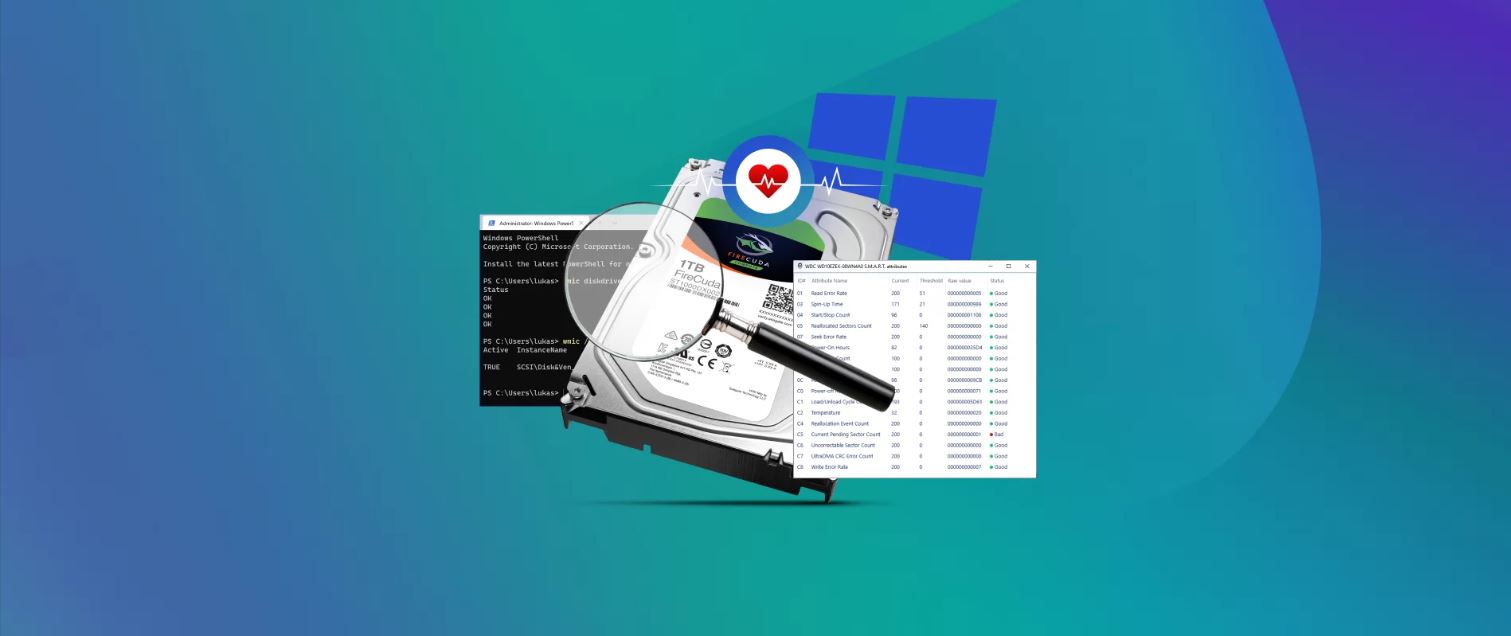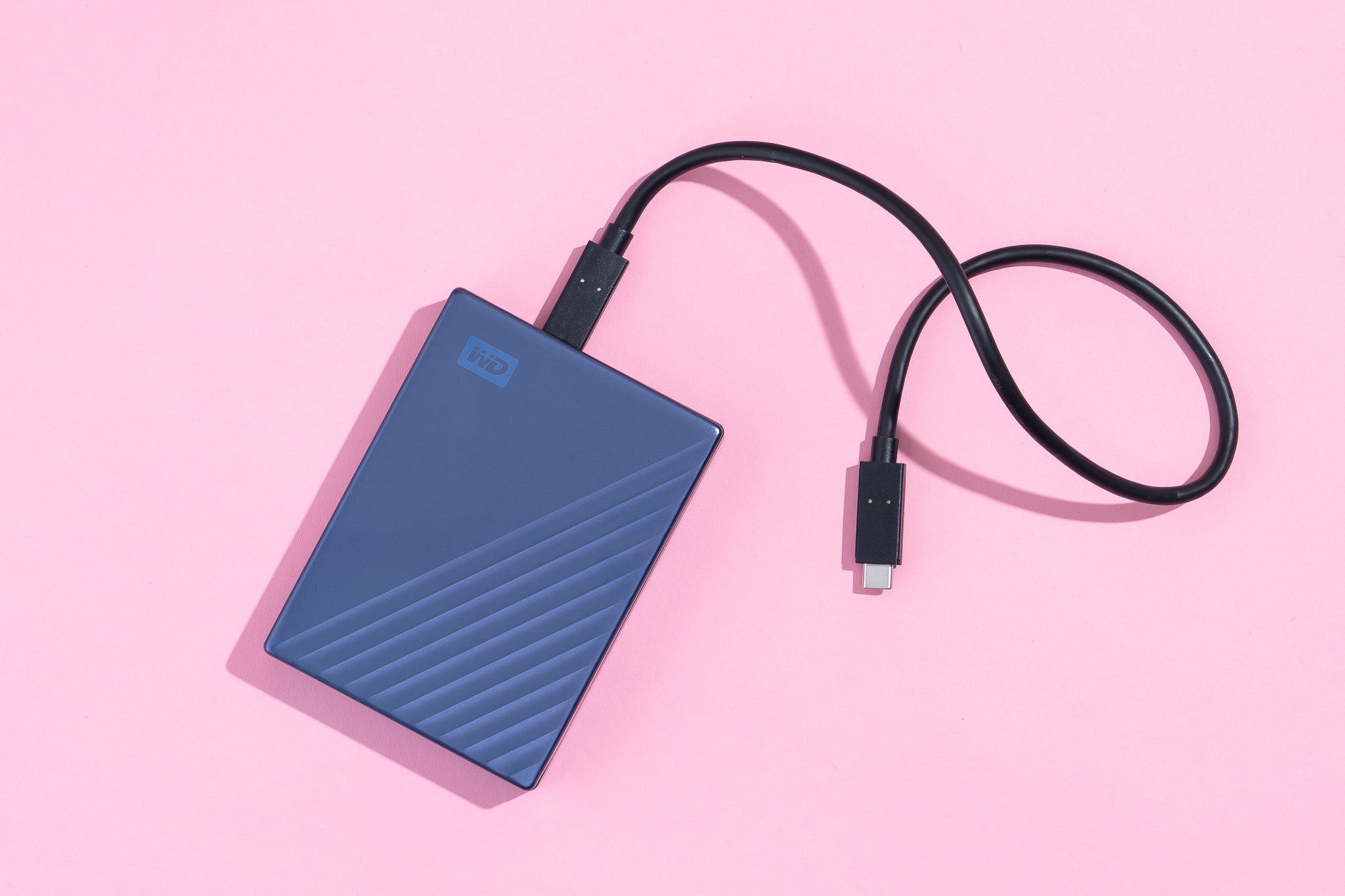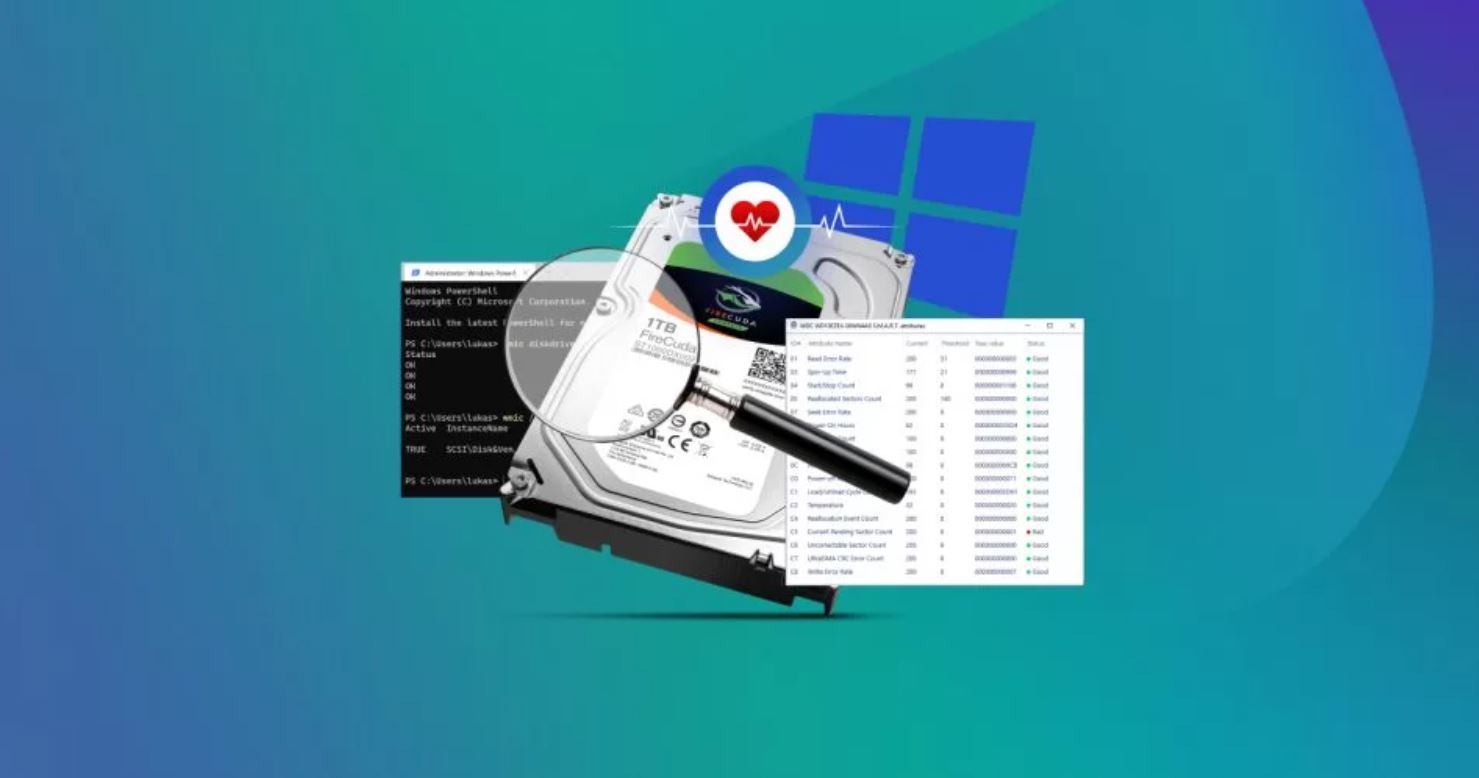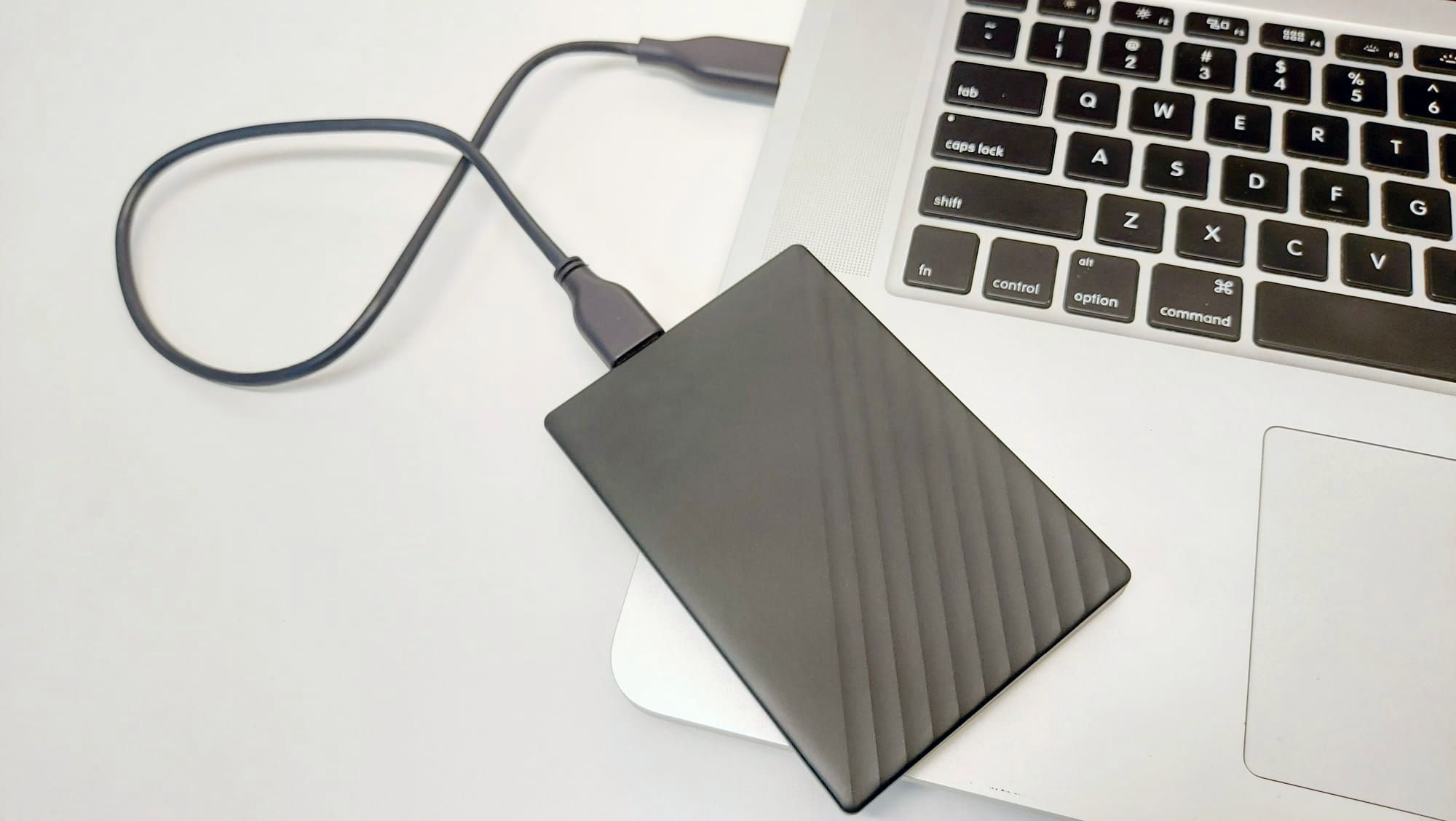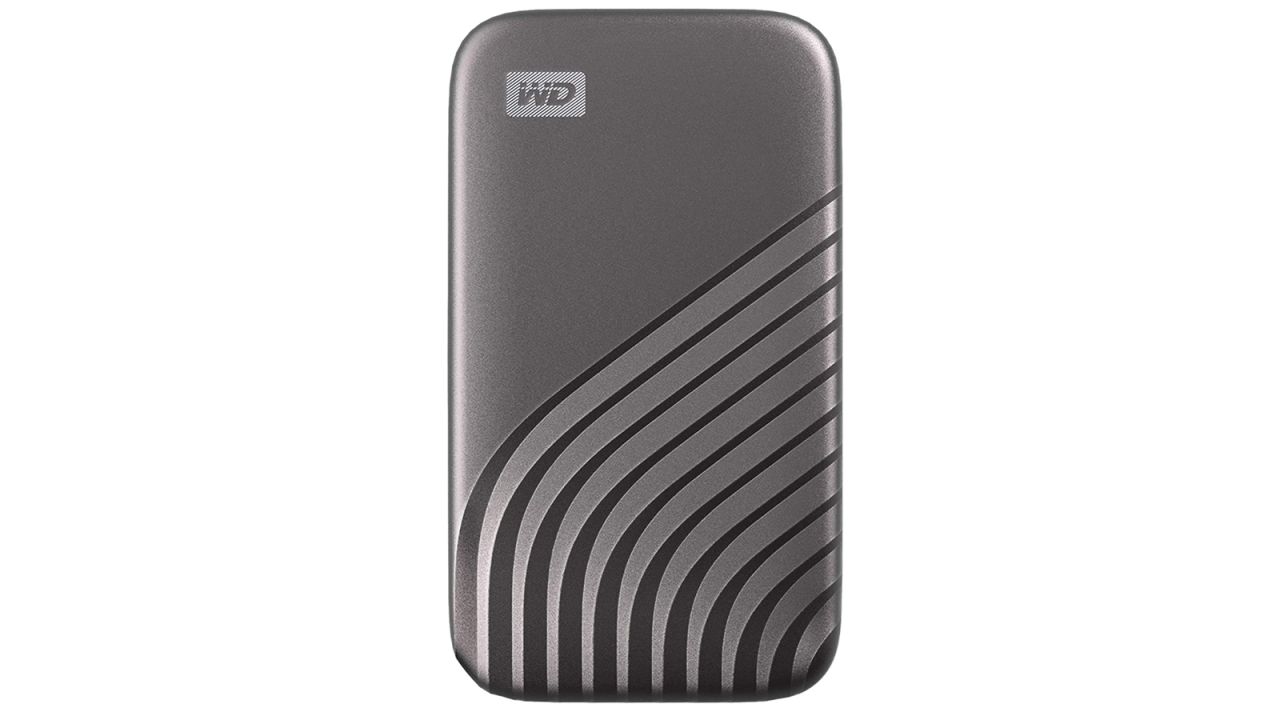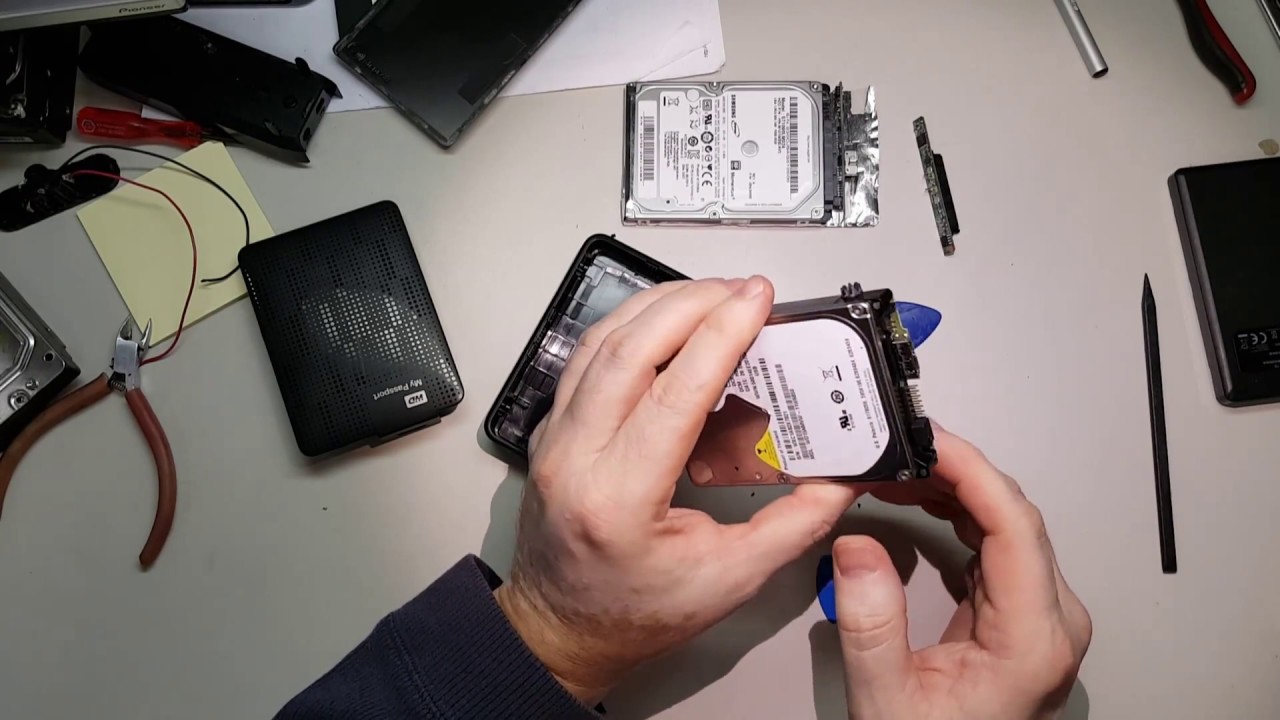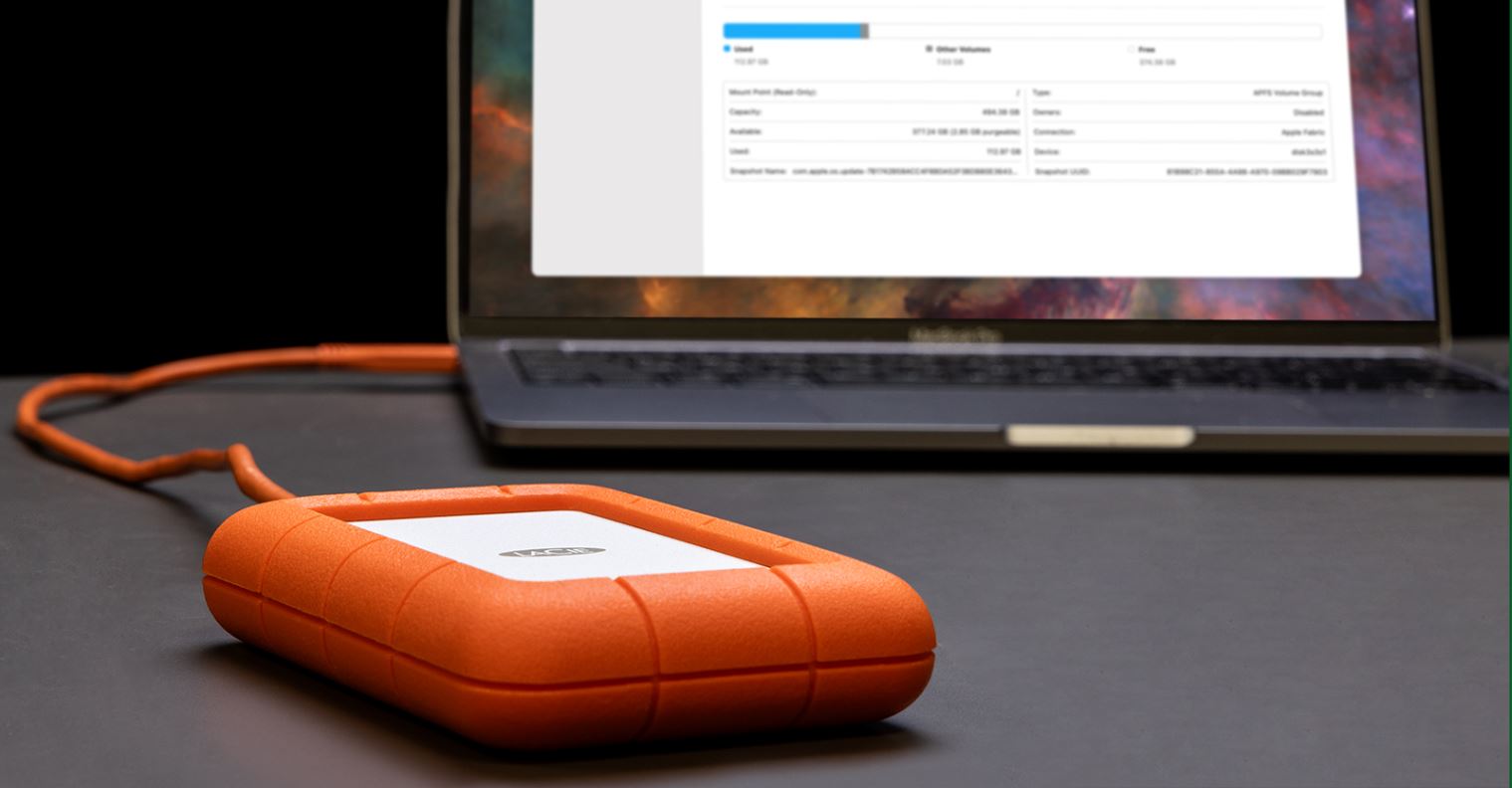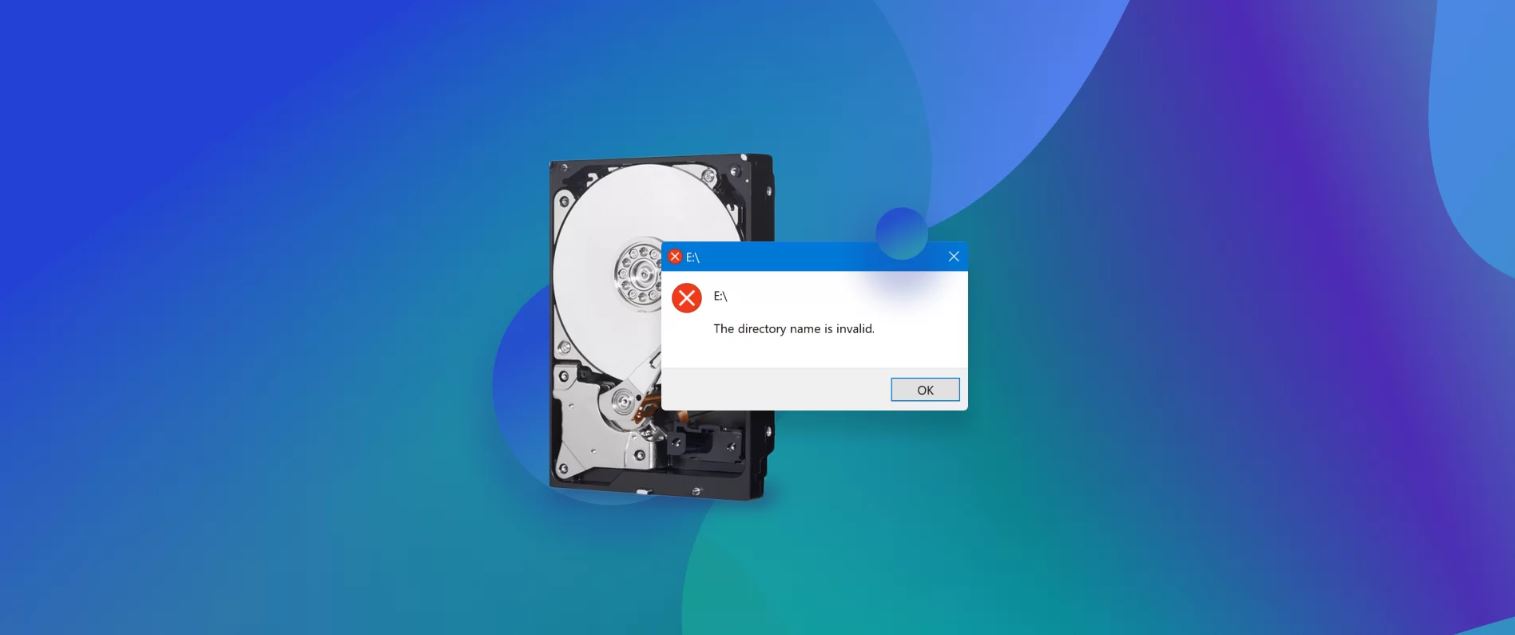Introduction
Welcome to our guide on how to check the health of your external hard drive. In today’s digital age, where we rely heavily on storing and accessing important data, it is crucial to ensure the integrity and reliability of our storage devices.
An external hard drive serves as a convenient and portable solution for storing large amounts of data such as documents, photos, videos, and backups. However, like any other piece of technology, external hard drives can degrade over time and may eventually fail. This can result in data loss and inconvenience if not detected and addressed in a timely manner.
Fortunately, there are ways to monitor the health of your external hard drive, allowing you to identify potential issues and take appropriate action before it’s too late. By regularly checking the health of your external hard drive, you can minimize the risk of data loss and ensure that your valuable files remain secure and accessible.
In this guide, we will explore the importance of checking the health of your external hard drive, the common signs of a failing drive, and step-by-step instructions on how to perform a health check using built-in tools such as Disk Utility for Mac and CHKDSK for Windows. We will also discuss the option of using third-party software for disk health monitoring and provide essential tips for maintaining a healthy external hard drive.
Whether you use an external hard drive for personal or professional purposes, this guide will equip you with the knowledge and tools necessary to assess the health of your drive and ensure the safety of your data. Let’s dive in!
Why is it important to check the health of your external hard drive?
Regularly checking the health of your external hard drive is essential for several reasons. Here are some key reasons why you should prioritize this task:
- Data Protection: Your external hard drive likely contains important files, documents, photos, and videos that you may not have backed up elsewhere. Checking the health of your drive helps ensure that your data is protected from potential loss or corruption.
- Early Detection of Issues: By monitoring the health of your external hard drive, you can detect early warning signs of potential problems. This allows you to take preventive measures and address issues before they escalate and result in data loss.
- Optimized Performance: A healthy external hard drive performs efficiently and delivers faster data transfer speeds. Regular health checks allow you to identify and resolve performance-related issues that could impact the speed and functionality of your device.
- Prolonged Lifespan: Continued usage and wear and tear can impact the lifespan of your external hard drive. Regular health checks, along with proper maintenance, can help extend the lifespan of your drive and ensure its longevity.
- Peace of Mind: Knowing that your external hard drive is in good health provides peace of mind. You can have confidence that your data is secure and accessible when you need it, without the fear of unexpected drive failure.
By investing a small amount of time in checking the health of your external hard drive, you can significantly reduce the risk of data loss, improve performance, and increase the overall lifespan of your device. Now that we understand the importance of performing regular health checks, let’s explore the signs that indicate a failing external hard drive and how to detect them.
Signs of a failing external hard drive
Recognizing the signs of a failing external hard drive is crucial in order to take prompt action and prevent potential data loss. Here are some common indicators that may suggest your external hard drive is experiencing problems:
- Unusual Noises: If your external hard drive starts making unusual clicking, grinding, or buzzing noises, it could be a sign of mechanical failure. These noises indicate that the drive’s internal components are not functioning properly and should be addressed immediately.
- Slow Response Time: If you notice a significant decrease in the speed or responsiveness of your external hard drive when accessing files or performing tasks, it may indicate mechanical or logical issues. Slow response time can be an early warning sign of impending drive failure.
- File System Errors: Frequent error messages or system notifications regarding file system errors, corrupted files, or bad sectors on your external hard drive may suggest underlying problems. These errors can cause data loss or make it difficult to access specific files or folders.
- Repeated Disconnections: If your external hard drive frequently disconnects and reconnects without any apparent reason, it could be a sign of a failing USB port, cable, or the drive itself. This issue can disrupt data transfer and potentially lead to data corruption or loss.
- Failure to Mount: If your computer fails to detect or recognize your external hard drive when connected, it may indicate issues with the drive’s firmware, connectors, or power supply. In such cases, your drive may require professional assistance to retrieve the data.
- Overheating: An external hard drive that becomes unusually hot to the touch during use is a cause for concern. Overheating can lead to physical damage and potential data loss. It is advisable to ensure proper ventilation and cooling for your drive.
It’s important to note that experiencing one or more of these signs does not necessarily guarantee that your external hard drive is failing. However, they should be taken as warning signs, and it is recommended to perform a health check to assess the condition of your drive and address any potential issues. In the next section, we will walk you through the steps to check the health of your external hard drive using various methods depending on your operating system.
Steps to check the health of your external hard drive
Checking the health of your external hard drive is a straightforward process that can help you identify potential issues and ensure the longevity of your device. Here are the general steps to follow:
- Backup your data: Before performing any health checks or maintenance tasks on your external hard drive, it is crucial to back up your data to a separate location. This ensures that even if issues arise during the process, your important files and documents remain safe.
- Connect your external hard drive: Plug in your external hard drive to your computer using the appropriate USB or Thunderbolt cable. Ensure that the connection is secure and the drive is properly recognized by your operating system.
- Select a health check method: Depending on your operating system, you can choose between built-in tools or third-party software to check the health of your external hard drive. We will cover the three most common methods in the following sections.
- Follow the instructions for your chosen method: Once you have selected a health check method, follow the provided instructions to initiate the process. This may involve running scans, diagnosing potential issues, and generating reports on the health status of your external hard drive.
- Review the health report: After the health check is complete, review the generated report to identify any existing problems or potential concerns. Pay attention to any warnings or errors that may require further action.
- Take appropriate action: If the health report indicates any issues, take appropriate action based on the recommended steps provided by the health check tool. This may involve repairing file system errors, replacing faulty components, or seeking professional assistance if necessary.
- Regularly repeat the health check: It is advisable to perform regular health checks on your external hard drive to ensure ongoing data protection and early detection of any issues. The frequency of these checks will depend on your usage frequency and the importance of the stored data.
By following these steps, you can effectively monitor the health of your external hard drive and take necessary measures to maintain its optimal performance and functionality. Next, we will explore different options for checking the health of your external hard drive based on your operating system.
Option 1: Disk Utility (for Mac)
If you’re using a Mac, the built-in Disk Utility tool provides an easy and effective way to check the health of your external hard drive. Here are the steps to follow:
- Open Disk Utility: Go to your Applications folder, then access the Utilities folder and open Disk Utility.
- Select your external hard drive: In the Disk Utility window, you will see a list of connected drives. Locate and select your external hard drive from the sidebar on the left.
- Run First Aid: Click on the “First Aid” button located at the top of the Disk Utility window. This will initiate a scan of your external hard drive’s file system and check for any errors or corruptions.
- Review the scan results: After the scan is complete, Disk Utility will display a report indicating the health status of your external hard drive. It will list any errors or issues detected, along with suggested actions to resolve them.
- Take appropriate action: Based on the results, follow the recommended steps provided by Disk Utility to address any problems that were found. This may involve repairing the file system, reformatting the drive, or replacing faulty components.
- Perform regular health checks: To ensure ongoing monitoring of your external hard drive’s health, make it a habit to periodically run Disk Utility and perform the First Aid scan.
Using Disk Utility on Mac is a convenient way to quickly assess the health of your external hard drive and take necessary actions to resolve any issues. However, if you are using a Windows operating system, the following section will cover an alternative method using the CHKDSK utility.
Option 2: CHKDSK (for Windows)
For Windows users, the CHKDSK (Check Disk) utility provides a powerful built-in tool to check the health of your external hard drive. Follow these steps to utilize CHKDSK:
- Open Command Prompt: Press the Windows key + R to open the Run dialog box. Type “cmd” and press Enter to open the Command Prompt.
- Identify your external hard drive: In the Command Prompt window, type “diskpart” and press Enter. Then, enter “list volume” to view a list of all connected drives. Identify the volume number associated with your external hard drive.
- Run CHKDSK: In the Command Prompt window, type the following command, replacing “X” with the correct volume number for your external hard drive: “chkdsk X: /f /r”. Press Enter to start the scanning process.
- Allow CHKDSK to complete: Depending on the size and condition of your external hard drive, the CHKDSK scan may take some time to complete. It will scan for file system errors, bad sectors, and attempt to repair them.
- Review the scan results: Once the CHKDSK scan finishes, you will see a summary of the scan results on the Command Prompt window. It will display any issues found and whether they were successfully repaired.
- Take appropriate action: If CHKDSK detects and repairs any errors, it’s recommended to backup your data and consider replacing the external hard drive if the issues persist. If no significant issues are found, you can continue using the drive, ensuring regular health checks in the future.
- Schedule regular checks: To automate regular health checks using CHKDSK, you can schedule it to run at specific intervals. Open Command Prompt as an administrator, and use the “chkntfs /c X:” command, replacing “X” with the drive letter of your external hard drive, to schedule future scans.
By utilizing the CHKDSK utility, Windows users can effectively check the health of their external hard drives and take necessary action to maintain data integrity. If you prefer using third-party software for disk health monitoring, the next section will provide you with alternative options.
Option 3: Third-party software for disk health monitoring
In addition to the built-in tools provided by your operating system, there are several third-party software options available for monitoring the health of your external hard drive. These tools offer more advanced features and detailed insights into the condition of your disk. Here are a few popular options:
- CrystalDiskInfo: CrystalDiskInfo is a free and lightweight utility that provides detailed information about your external hard drive’s health. It displays real-time monitoring data such as temperature, power-on hours, and S.M.A.R.T (Self-Monitoring, Analysis, and Reporting Technology) attributes to assess the drive’s overall health.
- HD Tune: HD Tune is a powerful software tool that offers a variety of disk diagnostics and monitoring features. It provides information on drive health, operational performance, and can perform error scans to detect bad sectors or other issues that may affect external hard drive performance.
- Hard Disk Sentinel: Hard Disk Sentinel is a comprehensive disk health monitoring tool that offers real-time monitoring as well as predictive failure detection. It provides detailed information about the health, temperature, and performance of your external hard drive, and generates alerts if any critical issues are detected.
When using third-party software, follow these general steps:
- Research and select a reliable software: Conduct some research to find a reputable and feature-rich third-party software tool that suits your requirements.
- Download and install the software: Visit the official website of the chosen software and download the installation package. Follow the on-screen instructions to install the software on your computer.
- Launch and configure the software: Open the software and navigate to the section or feature that allows you to monitor the health of your external hard drive. Configure any specific settings or preferences according to your needs.
- Monitor and act accordingly: Keep the software running in the background or periodically check the health status and alerts provided by the software. Take action as recommended by the software, such as backing up data, replacing the drive, or seeking professional assistance if critical issues are identified.
- Update the software: Regularly check for updates of the third-party software and install them to ensure compatibility with your operating system and access to the latest features and improvements.
Using third-party software can provide a more in-depth analysis of your external hard drive’s health and offer additional functionalities not available with built-in tools. However, always ensure the software you choose is reputable and from a trusted source.
Now that we’ve explored different methods for checking the health of your external hard drive, let’s move on to some essential tips for maintaining a healthy drive.
Tips for maintaining a healthy external hard drive
To ensure the longevity and optimal performance of your external hard drive, it’s important to implement good maintenance practices. Here are some valuable tips to help you maintain a healthy external hard drive:
- Handle with care: Avoid dropping, bumping, or mishandling your external hard drive. Treat it gently and store it in a secure location when not in use.
- Keep it clean and dust-free: Regularly clean your external hard drive using a soft, lint-free cloth. Remove any dust or debris that may have accumulated on the surface or around the connectors.
- Protect from extreme temperatures: Avoid exposing your external hard drive to extreme temperatures, both hot and cold. Heat can damage the internal components, while extreme cold can affect the drive’s functionality.
- Eject properly: Always eject your external hard drive using the proper method specified by your operating system. Sudden disconnection can result in data corruption or damage to the drive.
- Use a surge protector or UPS: Connect your external hard drive to a surge protector or an Uninterruptible Power Supply (UPS) to protect it from voltage fluctuations and power surges.
- Keep an eye on the temperature: Monitor the temperature of your external hard drive regularly using monitoring software or by touch. If it becomes excessively hot during use, ensure proper ventilation or consider using a cooling pad.
- Avoid excessive vibration: Minimize excessive movement or vibration when your external hard drive is in use. Rigidly mounting the drive on a stable surface can help reduce vibration-related issues.
- Backup your data regularly: Regularly back up your important data stored on the external hard drive to a separate location. This ensures that even if the drive fails, your valuable files remain safe.
- Update your software and firmware: Keep your operating system, disk utility tools, and firmware of the external hard drive up to date. Updates often include bug fixes, security enhancements, and performance improvements.
- Replace aging drives: If your external hard drive is old and exhibiting signs of failure, consider replacing it with a new one. As drives age, they become more prone to failure, and it’s better to be proactive than experience unexpected data loss.
By following these tips, you can significantly improve the lifespan and reliability of your external hard drive. Regular maintenance and proper handling will ensure the safety of your important data and maximize the performance of your device.
Now that you are equipped with the knowledge of how to check the health of your external hard drive and maintain its optimal performance, it’s time to put what you’ve learned into practice. Stay proactive in monitoring the health of your drive and take immediate action if any issues arise. By doing so, you can enjoy a trouble-free experience and prevent potential data loss.
Conclusion
Ensuring the health of your external hard drive is paramount in maintaining the security and accessibility of your valuable data. By regularly checking the health of your drive, you can detect potential issues early on and take necessary steps to prevent data loss or drive failure.
In this guide, we discussed the importance of monitoring the health of your external hard drive and presented various methods to perform health checks. We explored the use of built-in tools like Disk Utility for Mac and CHKDSK for Windows, as well as the option of utilizing third-party software for more advanced monitoring capabilities.
We also highlighted the signs of a failing external hard drive and provided essential tips for maintaining a healthy drive, such as handling it with care, keeping it clean, and protecting it from extreme temperatures and power fluctuations.
Remember, data loss can have severe consequences, both personally and professionally. Therefore, it’s crucial to back up your data regularly to ensure its safety. Keep in mind that prevention is key, and the implementation of regular health checks and proper maintenance practices will go a long way in safeguarding your data and prolonging the lifespan of your external hard drive.
By following the steps outlined in this guide and incorporating the suggested tips, you can have peace of mind knowing that you are taking proactive measures to protect your data and maintain the health and performance of your external hard drive.
So, go ahead and assess the health of your external hard drive today, and make it a habit to perform regular checks in the future. Your data and your investment in storage will thank you.







